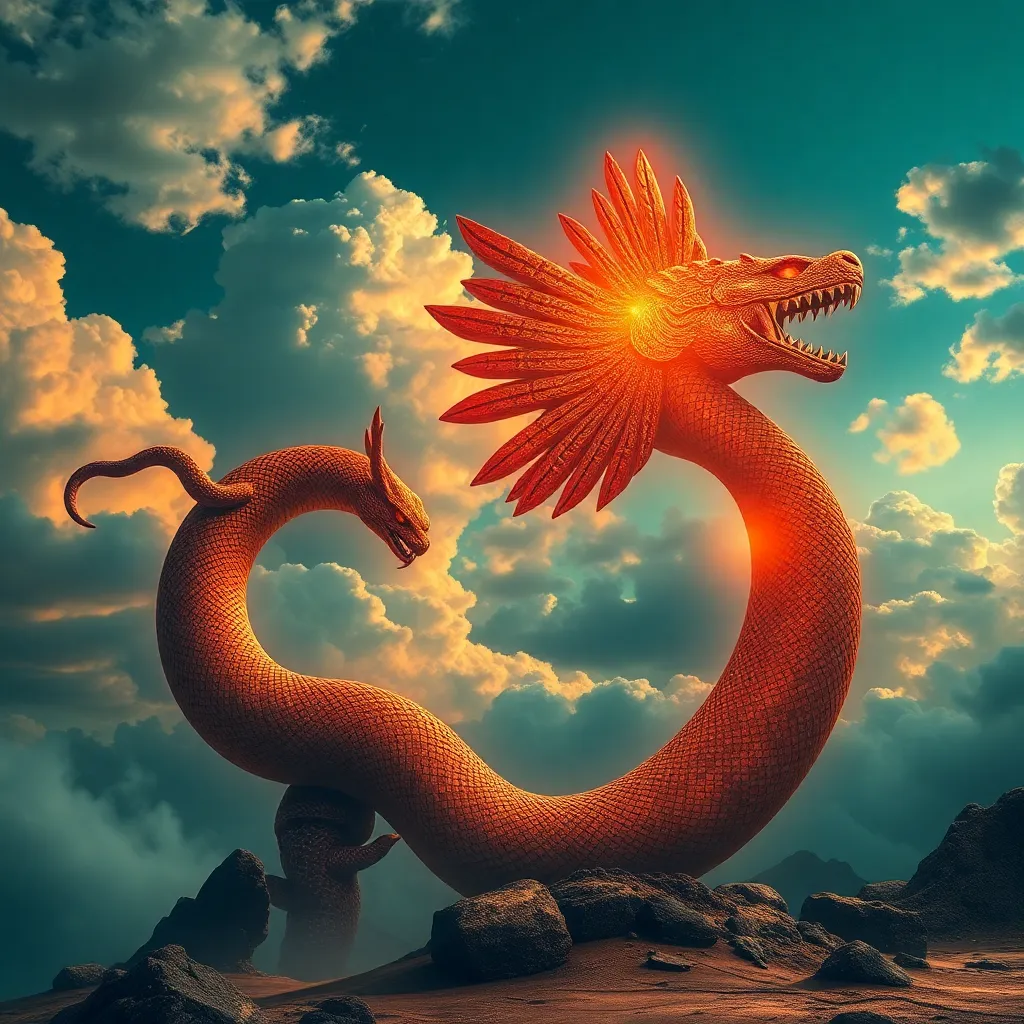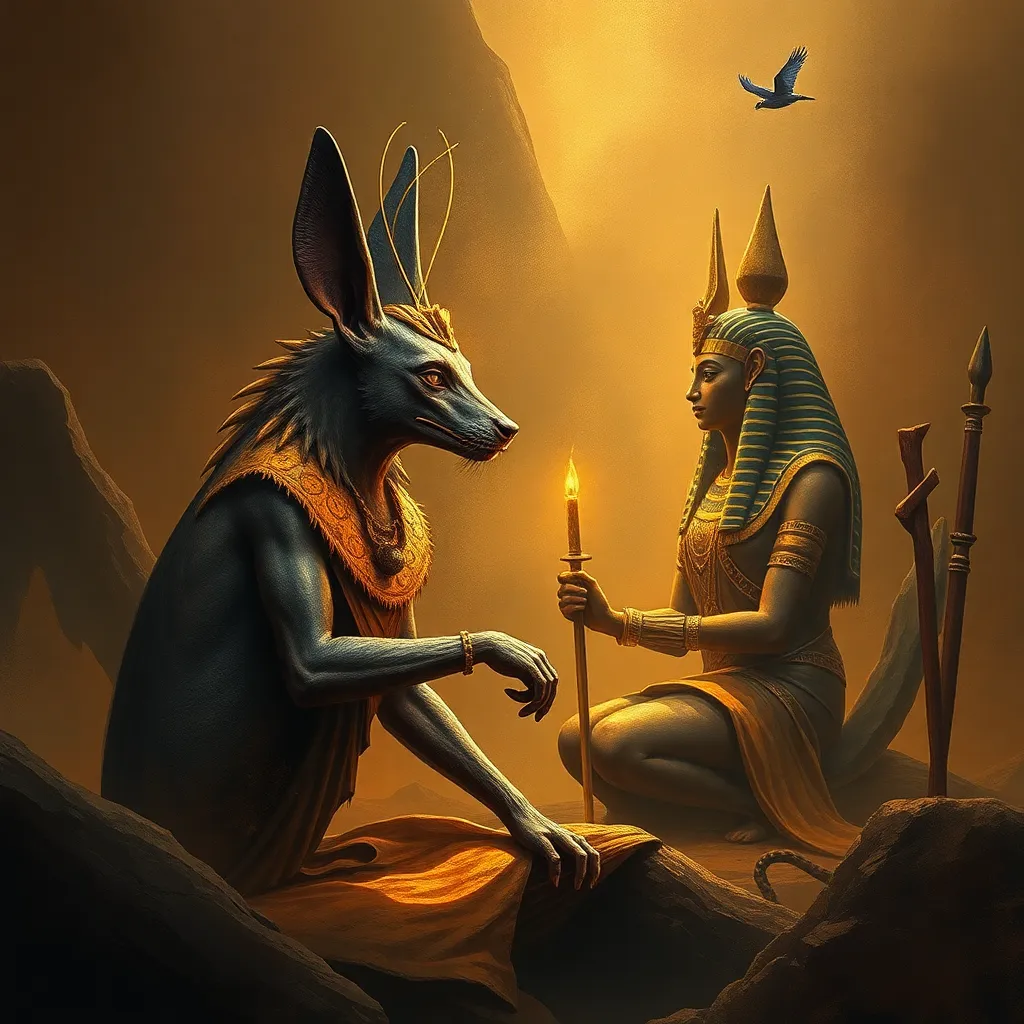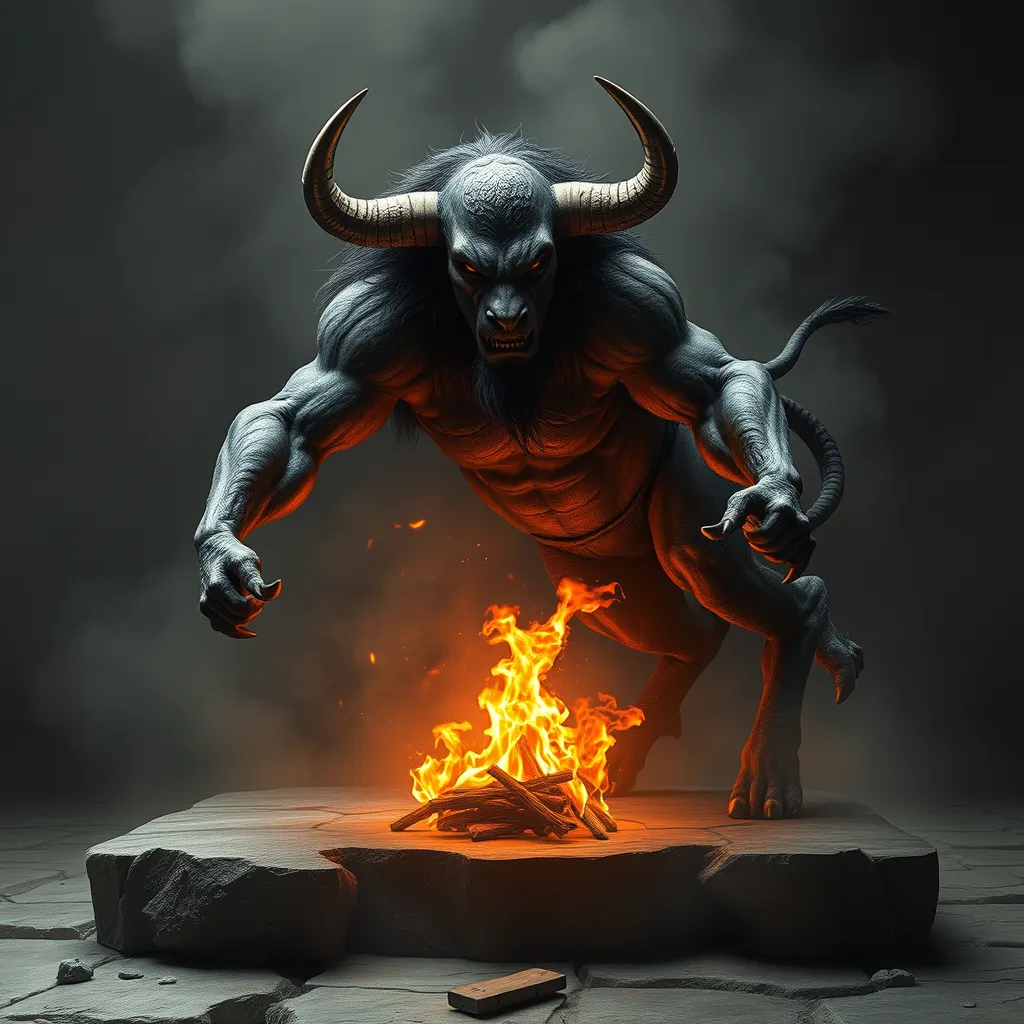The Serpent and the Sky: Itzamná and the Divine Serpent Kukulkan
I. Introduction
In the rich tapestry of Mesoamerican mythology, two deities stand out for their profound significance: Itzamná and Kukulkan. These serpentine figures are emblematic of the ancient cultures that revered them, representing the intricate connections between the earth, sky, and the cycles of life. This article explores the origins, characteristics, and enduring influence of Itzamná and Kukulkan in Mesoamerican culture, shedding light on the importance of serpentine deities throughout history.
II. The Origins of Itzamná
Itzamná is one of the most important gods in the Mayan pantheon, often regarded as the creator deity and associated with wisdom, the sky, and the night. His origins are deeply rooted in the mythology of the Maya, where he is believed to have played a crucial role in the creation of the world.
A. Historical context of Itzamná as a deity
Itzamná was worshipped across various Mesoamerican cultures, but his most significant presence was among the Maya. His name translates to lizard house, which symbolizes the connection between the earth and the divine. Historical texts, such as the Popol Vuh, detail his involvement in creation stories, affirming his position as a central figure in Mayan spirituality.
B. Itzamná’s attributes and symbolism
Itzamná is often depicted as an old man with a cross on his forehead, symbolizing the heavens. His attributes include:
- Wisdom and knowledge
- Creation and fertility
- Healing and medicine
These characteristics highlight his role as a benevolent creator who nurtures and guides humanity.
C. Itzamná’s role in creation myths
In the creation myths, Itzamná is said to have used his wisdom to shape the world, forming the mountains, rivers, and the first humans. His dual nature allows him to be both a nurturing father and a powerful creator, embodying the balance of life and death.
III. The Divine Serpent: Kukulkan
Kukulkan, the feathered serpent, represents a unique aspect of Mesoamerican mythology. This deity is revered not only for his serpentine form but also for his association with the wind, rain, and storms.
A. Overview of Kukulkan and its significance
Kukulkan is often considered the Maya counterpart to the Aztec deity Quetzalcoatl. Both are linked to the concept of the feathered serpent and are significant in the creation and agricultural cycles.
B. Characteristics and depictions of Kukulkan
Kukulkan is typically depicted as a serpent adorned with feathers, symbolizing the connection between the earth and the sky. His attributes include:
- Wind and weather control
- Fertility and agriculture
- Wisdom and knowledge
These elements illustrate his vital role in sustaining life and ensuring the prosperity of the people.
C. Relationship between Kukulkan and Itzamná
The relationship between Kukulkan and Itzamná is complex and multifaceted. While both deities share similar attributes, their roles in mythology differ. Kukulkan is often seen as a manifestation of Itzamná, embodying the same creative force but with a focus on the natural elements and agriculture.
IV. The Symbolism of the Serpent in Mesoamerican Culture
Serpents hold a significant place in Mesoamerican culture, symbolizing various themes that resonate throughout myth and practice.
A. The serpent as a symbol of renewal and transformation
The serpent is often associated with the cycles of life, death, and rebirth. Its ability to shed its skin symbolizes renewal and transformation, making it a powerful emblem in rituals and ceremonies.
B. The duality of the serpent: good vs. evil
In Mesoamerican mythology, the serpent embodies duality. It can represent both good and evil, life and death, reflecting the complexities of existence. This duality is evident in the stories of both Itzamná and Kukulkan, who can act as benevolent creators or destructive forces.
C. The serpent in art, mythology, and ritual practices
Serpents are prevalent in Mesoamerican art, often depicted in sculptures, pottery, and murals. They also feature prominently in ritual practices, symbolizing the connection between the earthly and divine realms.
V. The Connection Between Itzamná and Kukulkan
The relationship between Itzamná and Kukulkan is a crucial aspect of Mesoamerican cosmology, reflecting shared attributes and myths.
A. Shared attributes and myths
Both deities share qualities of wisdom, creativity, and influence over the agricultural cycles. Their myths often intertwine, showcasing their collaborative roles in creation and the sustenance of life.
B. The significance of their relationship in Mesoamerican cosmology
The connection between Itzamná and Kukulkan illustrates the Mesoamerican understanding of the universe as a balanced system. The interplay between these deities signifies the importance of harmony in nature and society.
C. How their stories intersect in cultural narratives
The narratives surrounding Itzamná and Kukulkan often overlap, with each deity contributing to the collective understanding of creation, life, and the natural world.
VI. Kukulkan’s Influence on Ancient Civilizations
Kukulkan’s impact on ancient civilizations, particularly the Maya, is profound and far-reaching.
A. The role of Kukulkan in the Maya civilization
Kukulkan was central to Maya religion and society, influencing agricultural practices, rituals, and governance. His worship was integral to ensuring bountiful harvests and the stability of the community.
B. Architectural representations (e.g., El Castillo at Chichen Itza)
One of the most famous representations of Kukulkan is found at El Castillo, the pyramid at Chichen Itza. This architectural marvel is designed to reflect the serpent’s descent during the equinox, symbolizing the deity’s connection to the heavens and the earth.
C. Kukulkan’s impact on rituals and ceremonies
Rituals dedicated to Kukulkan often involved offerings, dances, and ceremonies aimed at invoking his blessings for rain and fertility, reinforcing his significance in the agricultural calendar.
VII. The Legacy of Itzamná and Kukulkan in Modern Culture
The stories and significance of Itzamná and Kukulkan continue to resonate in modern culture, influencing contemporary Mesoamerican communities and beyond.
A. How their stories continue to influence contemporary Mesoamerican communities
Many indigenous communities maintain practices and beliefs rooted in the worship of Itzamná and Kukulkan, integrating these deities into their cultural identity and spiritual practices.
B. The resurgence of interest in ancient beliefs and practices
In recent years, there has been a growing interest in ancient Mesoamerican beliefs, prompting a revival of rituals, festivals, and cultural expressions that honor these deities.
C. Representation in popular media and literature
Itzamná and Kukulkan have also found their way into popular media, including literature, films, and art, reflecting a broader fascination with Mesoamerican mythology and its relevance to contemporary issues.
VIII. Conclusion
In summary, Itzamná and Kukulkan represent the rich and complex mythology of the Mesoamerican world. Their stories highlight the importance of serpentine deities in understanding the cultural and spiritual landscape of ancient civilizations. The enduring significance of these figures serves as a reminder of the interconnectedness of life, nature, and the cosmos, offering valuable insights into the beliefs that shaped Mesoamerican culture and continue to inspire modern interpretations.




